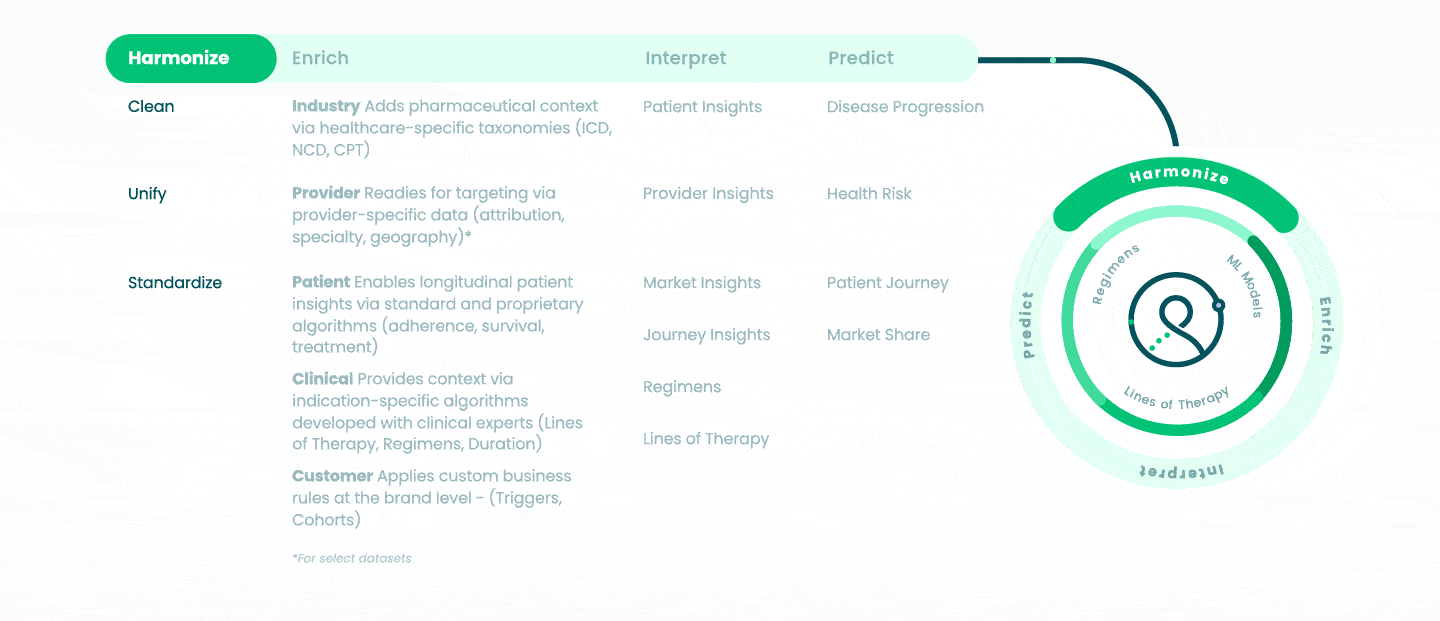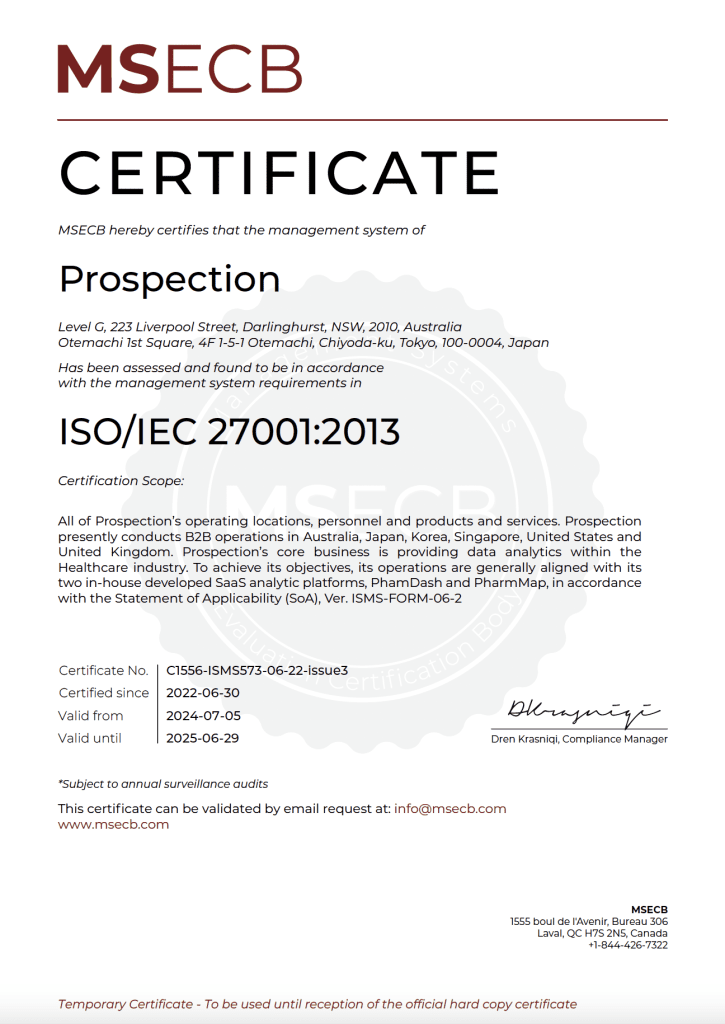Patient-centric Intelligence Core
Transforming Real World Data into Intelligence for Pharma Teams

Transforming Real World Data into Intelligence for Pharma Teams
RWD informs, Patient-centric Intelligence transforms
Prospection’s data and analytics technology engine, the Patient-centric Intelligence Core (PCI Core), sits at the center of what we do, powering all our products, services, and enriched data offerings. It delivers patient-level understanding across 400 million complex, longitudinal patient journeys reflective of entire patient populations…analyzed in seconds.
How Does Real World Data Get Turned Into Patient-centric Intelligence
Prospection’s PCI Core ingests, harmonizes and structures raw claims data, then infuses customer- and market-specific enrichments across multiple therapeutic areas and indications to deliver clear, patient-centered visibility into the patient journey and treatment market.


From RWD to Intelligence
RWD
Harmonize Raw Data
Claims data is ingested and harmonized as soon as each update is released
Apply TA Reference Data
Codify events of interests - drugs, diseases & procedures
Define Target Cohort
Data categorization of treatment stages and combined therapies
Prepare for Insights
Generate report and insight capabilities, correct and adjust for data anomalies and biases
Apply Clinical Enrichments
Infuse Lines of Therapy, regimens, treatment durations, remission periods, and more
Build Market Definition
Apply customer-specific market and patient journey needs
From RWD to Intellligence
RWD
Harmonize Raw Data
Claims data is ingested and harmonized as soon as each update is released
Apply TA Reference Data
Codify events of interests - drugs, diseases & procedures
Define Target Cohort
Data categorization of treatment stages and combined therapies
Build Market Definition
Apply customer-specific market and patient journey needs
Apply Clinical Enrichments
Infuse Lines of Therapy, regimens, treatment durations, remission periods, and more
Prepare for Insights
Generate report and insight capabilities, correct and adjust for data anomalies and biases
How does the PCI Core work?
The Patient-centric Intelligence Core follows each patient through time, interpreting events and treatments and creating a detailed view of their medical journey. It does this at scale for 100+ indications across 400m patients, creating a source of patient-centric intelligence that is ready for insight generation.
Step 1
The PCI Core begins by mapping the history of each de-identified patient’s medical claims. With longitudinal data, the PCI Core follows each patient through time to interpret their medical journey and then create new data that is medically or commercially relevant.
- Individual claims and patient events
Step 2
The PCI Core’s disease-specific algorithms convert raw transaction data into clinically meaningful data.
A PCI platform ingests, harmonizes and structures raw claims data, then infuses customer- and market-specific enrichments across multiple therapeutic areas and indications to deliver clear, patient-centered visibility into the patient journey and treatment market.
- R-Chop regimen as line 1 therapy 6 cycles
- 17 months of treatment free remission
- Bendamustine in line 2 Persistence of 6 months
- 9 months of treatment free remission
- R-ICE regimen Line 3 therapy
- Radiation adjunct Therapy
- CART-T Therapy
- Maintenance therapy on Rituximab
For illustrative purposes, this visualization shows a de-identified record for an individual patient followed over 53 months. It charts relevant medical events along the patient’s treatment timeline derived via patient-centric intelligence, including Lines of Therapy, Treatment Regimens, Treatment Durations, and Remission Periods.
Step 3
When this is done for millions of patients, an accurate view of the patient journey for different cohorts is revealed.
Patient Journeys at scale provide data-driven insight into patient and provider behaviors, gaps in care and opportunities to improve outcomes.
With Patient-centric Intelligence applied, each patient is followed through time to interpret their medical journey, and then create insights that are medically and/or commercially relevant. This is done at scale for 100+ indications across hundreds-of-millions of patients.
